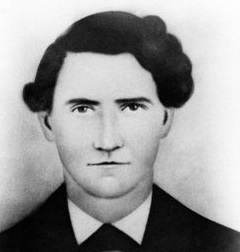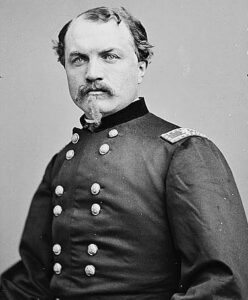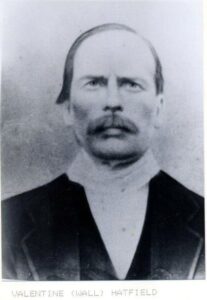A Little House Cleaning For Those Not From the Mountains
Feuding is nothing new to those who live in the mountains. Some feuds still carry on to this day and have lasted so long that most people don’t know why they are supposed to hate the other family. One such case was the Hatfield and McCoy most famous feud in American history.
Extended family and friends are often called clans. This is in no way to be confused with the KKK. The term clans will be used interchangeably with the word family when the extended family is involved in the conflict.
The Civil War caused a lot of havoc in the Appalachian Mountains. Important mountain crossings and river points becoming hotbeds of conflict between the North and the South and would change hands often. These crossings were important for supply lines and the movement of troops. While slavery was not an issue in the Appalachians, the issue of states’ rights versus the government’s rights was very much at the forefront. These were pre-coal mining days, so the conflicts between the Appalachians and the Coal Barons would not happen for many decades still to come.
Miniseries have been made, documentaries, movies, books, pamphlets, even Bugs Bunny had a couple of Cartoons based around it, Star Trek did a huge nod to it with its Doctor Leonard “Bones” McCoy, now a dinner and show restaurant in Sevierville, Tennessee. It has been famous, infamous, maligned, and celebrated. Why all of the fuss? Well, let’s dive into the Myth, Legend, and Facts of the Hatfield and McCoy Feud.
THE CIVIL WAR STORY (1862-1865)
The Hatfields of West Virginia were led by William Anderson “Devil Anse” Hatfield, while the McCoys of Kentucky were under the leadership of Randolph “Ole Ran’l” McCoy. The McCoy family lived mostly on the Kentucky side of the Tug Fork; the Hatfields lived mostly on the West Virginia side. Again, during that time families had members who fought on the other side of the fence. So when talking about the family as a whole, you can kinda say a family was this way or that way but in reality, it was a mixed bag depending on who they were.
Mose Christian Cline
The Pike County Guards in 1862, who at that time was led by William Francis, had shot and wounded Mose Christian Cline, he survived these wounds. However, he was a close friend to Anse Hatfield who swore to avenge the parties who were responsible for the shooting. Sometime in 1863, a group of Confederate Home Guards had ambushed and killed William Francis as he was leaving his house. Hatfield took credit for the shooting. This is not the last time the Cline family would be involved in the feud.
Asa Harmon McCoy
Asa Harmon McCoy joined the 45th Kentucky Infantry on October 20, 1863. During the early months of the war, Asa had joined the Pike County Home Guards under the command of Uriah Runyon. (Uriah Runyon was “killed by Rebels” on May 7, 1864.) By December 1863, McCoy was “captured by Rebels” and released four months later to a Union hospital where he was recovering from a gunshot wound to the chest. It is thought that he sustained the wound while serving his unit.
May 6, 1864, suffering from a leg fracture, Asa is reported as being in a Lexington hospital. On December 24, 1864, the 45th Kentucky Infantry Company E was mustered out of service.
Asa Harmon McCoy fought for the Union against his family. Just 13 days out of service on January 7, 1865, McCoy was confronted by and killed by the Logan Wildcats, a group of self-appointed home guards, enforcing their views of the law with violence and intimidation, patrolled the roads and settlements on both sides of the Tug River in Logan County, West Virginia. The Logan Wildcats, which had Anse Hatfield and Jim Vance (who was one of Anse’s uncles and known as “Uncle Jim”) as members, and both were from the Hatfield clan. Anse Hatfield also held considerable authority since he also employed many of the men in his timber operations.
Anse was found to be at home with an illness at the time of McCoy’s death, however, Vance was suspected of the murder. A group of Confederate Guerrillas took credit for the killing and McCoy’s wife’s pension application states that McCoy was “killed by Rebels”. However, Vance to this day is considered to be the one that killed McCoy. There are no existing records of McCoy’s death nor warrants for his murder.
While the death of Asa Harmon McCoy is not considered to be the beginning of the feud, it is considered to be the start of bad blood between the two clans.
After the War
After the War, Hatfield would employ many of the McCoy clan in his timber operations. While Randolph McCoy – known as Old Ran’l would also run a similar business, having large landholdings (a farm of 300 acres) and livestock, he was not as financially well off as Hatfield.
While there was some bad blood between the families over Asa’s death, the two families often shared social connections and marriages.
Valentine Hatfield “Wall” was the older brother to Anse, Valentine was content to let Anse make all of the decisions regarding the extended family, and this is why Anse is considered to be the Patriarch of the family. As a justice of the peace, Wall made legal decisions that fed the feud on the West Virginia side by being ignored on the Kentucky side, including regarding extradition and the issuance of warrants. During which members of both families changed sides, betraying family because of marriage or employment. This would come later with Roseanne McCoy.
MOONSHINE
Both families were involved in the manufacturing and sale of illegal moonshine. It is thought since they were competitors for the same market that this also contributed to the anger in both families.
Sources
All the Dirty Details About the Hatfield-McCoy Feud of the Late Nineteenth Century
https://historycollection.com/all-the-dirty-details-about-the-hatfield-mccoy-feud-of-the-late-nineteenth-century/
Hatfield–McCoy feud
https://en.wikipedia.org/wiki/Hatfield%E2%80%93McCoy_feud
The Untold Truth Of The Hatfield-McCoy Feud
https://www.grunge.com/349890/the-untold-truth-of-the-hatfield-mccoy-feud/
The Bloody Feud of the Hatfields and McCoys
https://www.legendsofamerica.com/hatfields-mccoys/
What’s the Real Story Behind the Hatfield-McCoy Feud?
https://www.wideopencountry.com/hatfields-and-mccoys-feud-real-story/
5 Things Hatfields and McCoys Still Feud Over
https://tourpikecounty.com/5-things-hatfields-and-mccoys-still-feud-over/
Copyright and Other Information
Copyrighted through a Creative Commons License.
This work is licensed under a Creative Commons
Social Media Pages
Facebook
https://facebook.com/kytnliving
Twitter
https://twitter.com/KYTNLiving
YouTube
https://youtube.com/kytnliving
When we forget our past and who we are as a people, then we become who “they” say we are. ~~ David Sergent
I have attended the University of Kentucky. I have an Associates Degree from Hazard Community College and Technical School. I have also attended the University of Pikeville. I have taken several classes in Journalism as well as in the Appalachian History, Literature, and Sociology during my time at those schools.
I was born in Florida and grew up in Burdine, Kentucky. I have been married to David W. Sergent since May 4, 2013. I have two children and four grandchildren from a previous marriage. I currently live in Tennessee but my hope is to one day come back home to live in the beautiful mountains once more.







